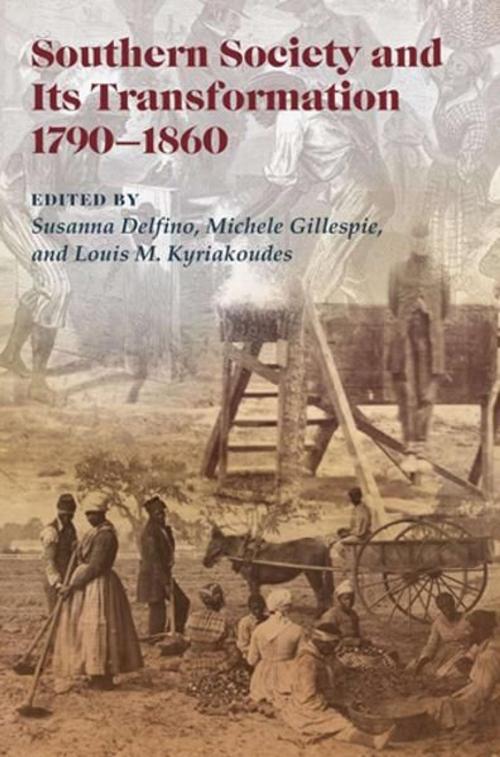| Author: | ISBN: | 9780826272430 | |
| Publisher: | University of Missouri Press | Publication: | June 15, 2011 |
| Imprint: | University of Missouri | Language: | English |
| Author: | |
| ISBN: | 9780826272430 |
| Publisher: | University of Missouri Press |
| Publication: | June 15, 2011 |
| Imprint: | University of Missouri |
| Language: | English |
In Southern Society and Its Transformations, a new set of scholars challenge conventional perceptions of the antebellum South as an economically static region compared to the North. Showing that the pre-Civil War South was much more complex than once thought, the essays in this volume examine the economic lives and social realities of three overlooked but important groups of southerners: the working poor, non-slaveholding whites, and middling property holders such as small planters, professionals, and entrepreneurs.
The nine essays that comprise Southern Society and Its Transformations explore new territory in the study of the slave-era South, conveying how modernization took shape across the region and exploring the social processes involved in its economic developments. The book is divided into four parts, each analyzing a different facet of white southern life. The first outlines the legal dimensions of race relations, exploring the effects of lynching and the significance of Georgia’s vagrancy laws. Part II presents the advent of the market economy and its effect on agriculture in the South, including the beginning of frontier capitalism. The third section details the rise of a professional middle class in the slave era and the conflicts provoked. The book’s last section deals with the financial aspects of the transformation in the South, including the credit and debt relationships at play and the presence of corporate entrepreneurship.
Between the dawn of the nation and the Civil War, constant change was afoot in the American South. Scholarship has only begun to explore these progressions in the past few decades and has given too little consideration to the economic developments with respect to the working-class experience. These essays show that a new generation of scholars is asking fresh questions about the social aspects of the South’s economic transformation. Southern Society and Its Transformations is a complex look at how whole groups of traditionally ignored white southerners in the slave era embraced modernizing economic ideas and actions while accepting a place in their race-based world. This volume will be of interest to students of Southern and U.S. economic and social history.
In Southern Society and Its Transformations, a new set of scholars challenge conventional perceptions of the antebellum South as an economically static region compared to the North. Showing that the pre-Civil War South was much more complex than once thought, the essays in this volume examine the economic lives and social realities of three overlooked but important groups of southerners: the working poor, non-slaveholding whites, and middling property holders such as small planters, professionals, and entrepreneurs.
The nine essays that comprise Southern Society and Its Transformations explore new territory in the study of the slave-era South, conveying how modernization took shape across the region and exploring the social processes involved in its economic developments. The book is divided into four parts, each analyzing a different facet of white southern life. The first outlines the legal dimensions of race relations, exploring the effects of lynching and the significance of Georgia’s vagrancy laws. Part II presents the advent of the market economy and its effect on agriculture in the South, including the beginning of frontier capitalism. The third section details the rise of a professional middle class in the slave era and the conflicts provoked. The book’s last section deals with the financial aspects of the transformation in the South, including the credit and debt relationships at play and the presence of corporate entrepreneurship.
Between the dawn of the nation and the Civil War, constant change was afoot in the American South. Scholarship has only begun to explore these progressions in the past few decades and has given too little consideration to the economic developments with respect to the working-class experience. These essays show that a new generation of scholars is asking fresh questions about the social aspects of the South’s economic transformation. Southern Society and Its Transformations is a complex look at how whole groups of traditionally ignored white southerners in the slave era embraced modernizing economic ideas and actions while accepting a place in their race-based world. This volume will be of interest to students of Southern and U.S. economic and social history.













![Cover of the book The Vanishing Newspaper [2nd Ed] by](https://www.kuoky.com/images/2009/september/300x300/9780826272034-5PcR_300x.jpg)

